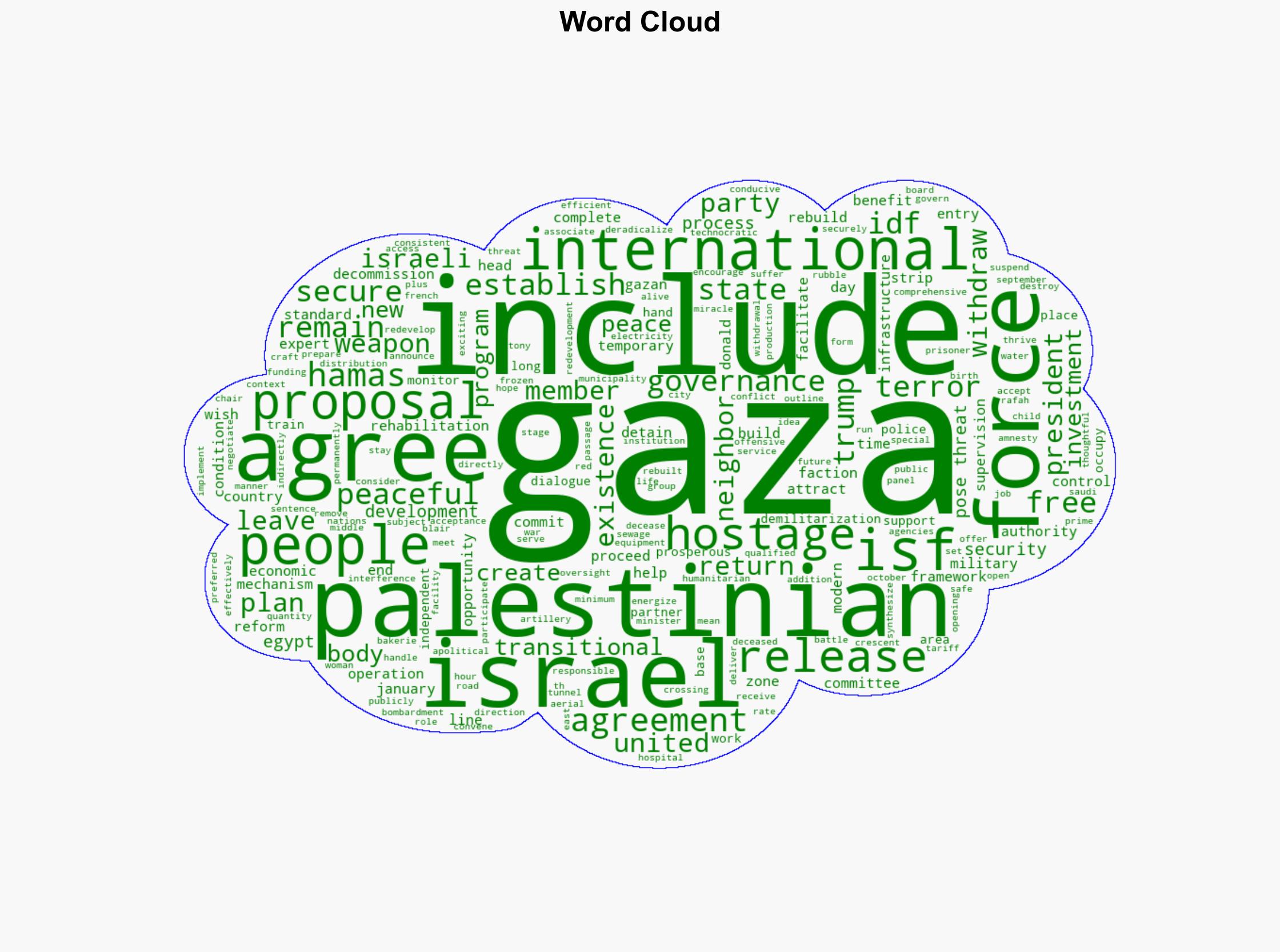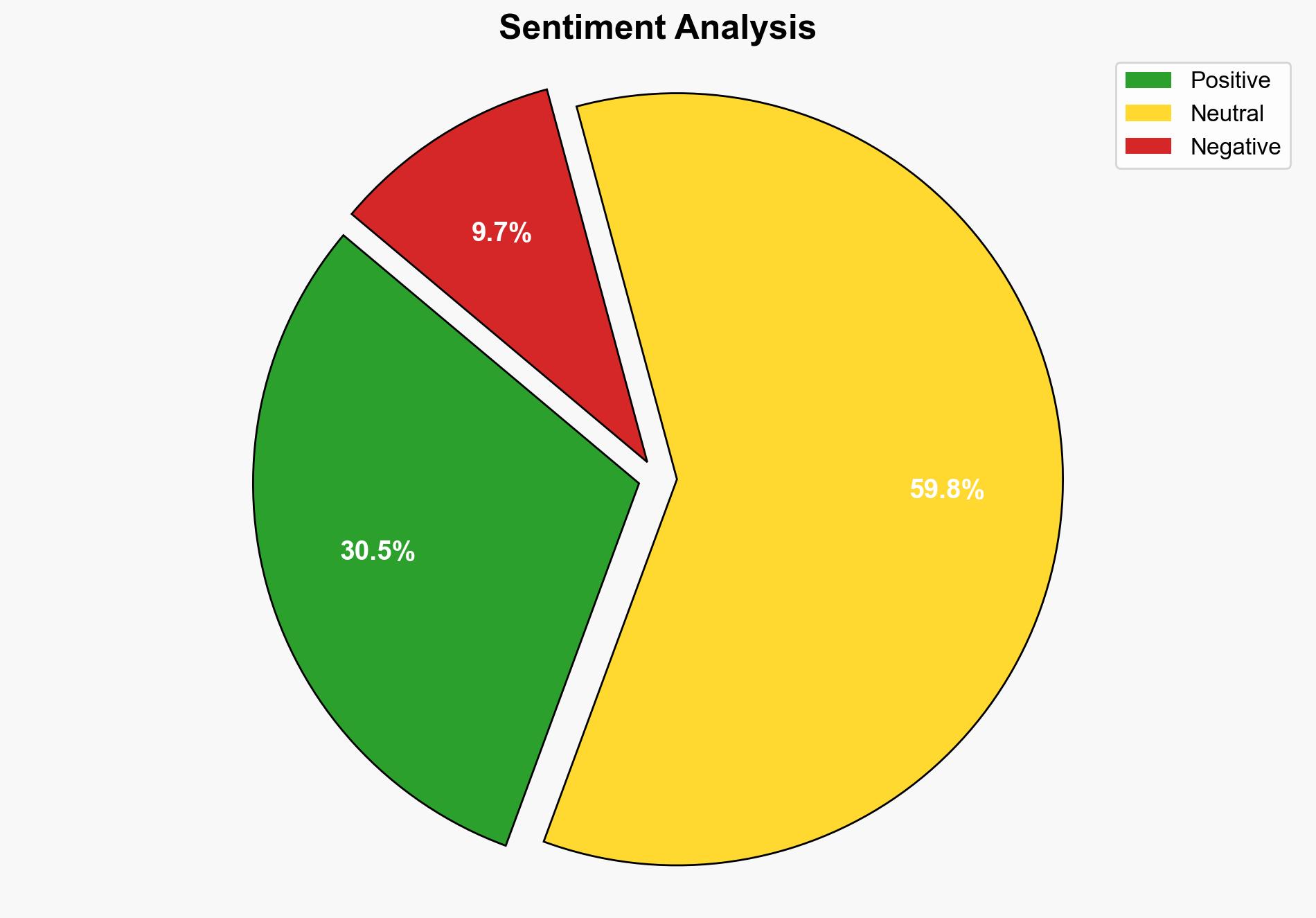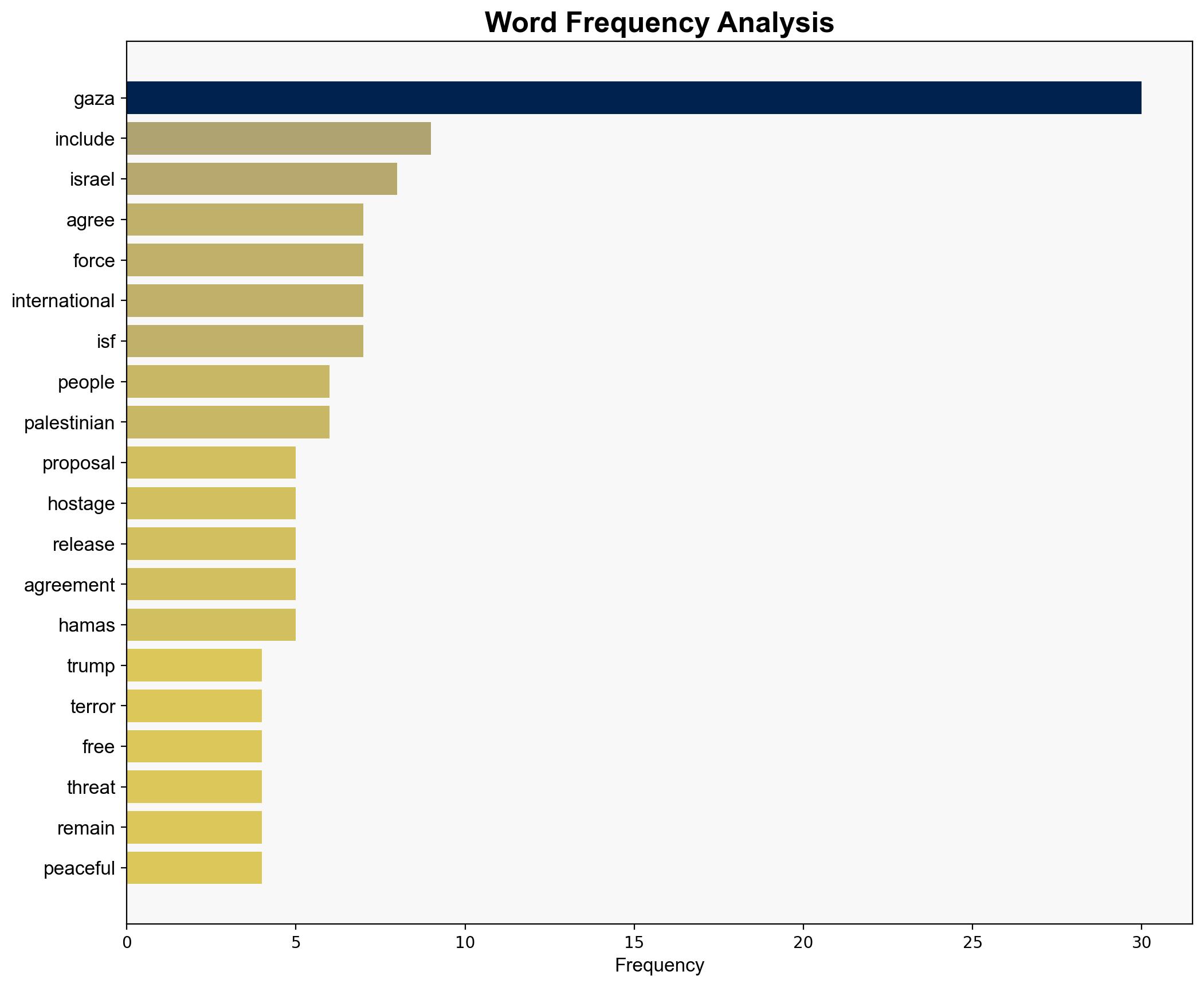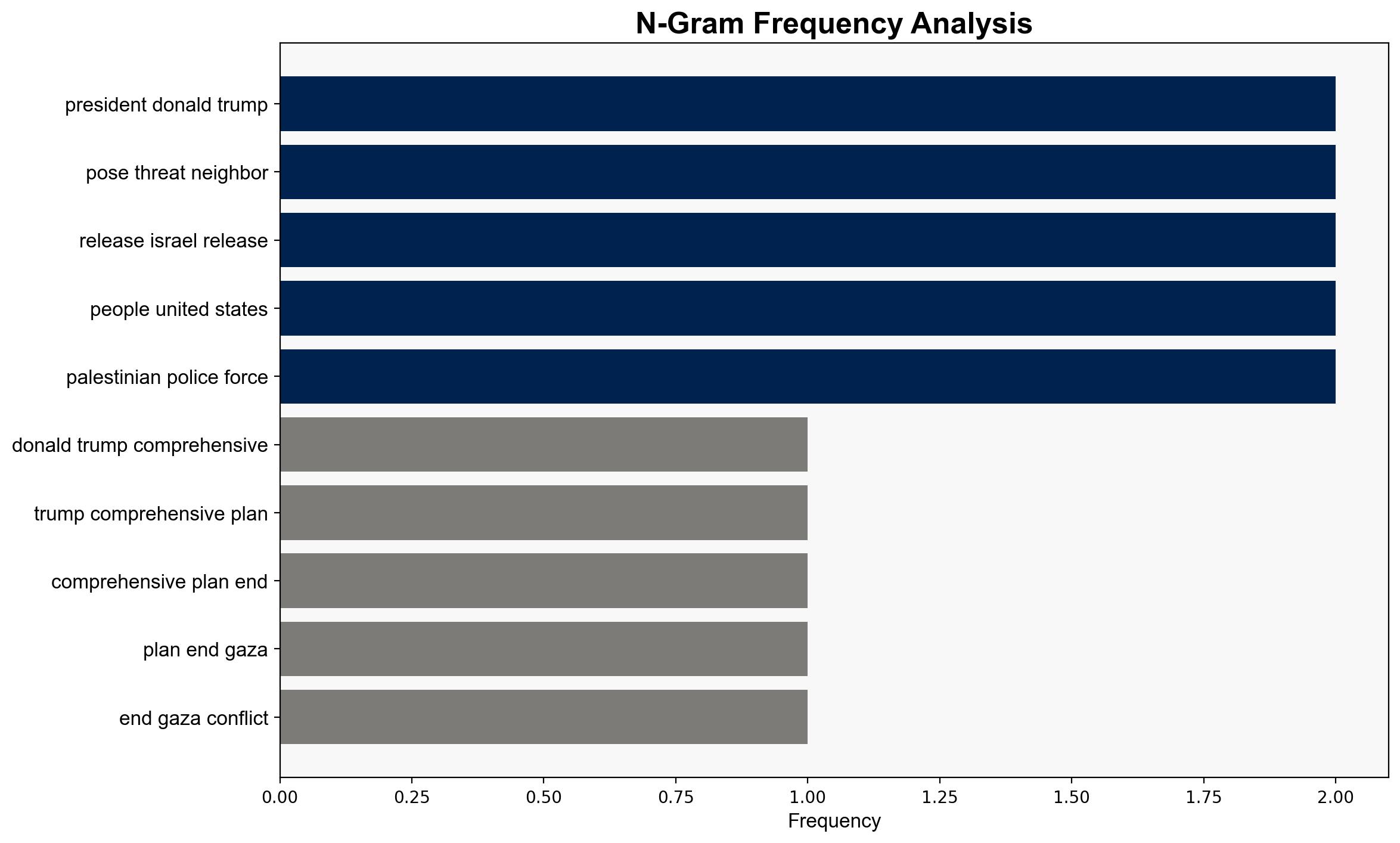President Donald J Trump’s Comprehensive Plan to End the Gaza Conflict – Globalsecurity.org
Published on: 2025-09-30
Intelligence Report: President Donald J Trump’s Comprehensive Plan to End the Gaza Conflict – Globalsecurity.org
1. BLUF (Bottom Line Up Front)
The most supported hypothesis is that President Trump’s plan aims to establish a stable and economically viable Gaza through a phased demilitarization and international oversight, contingent on cooperation from all parties involved. Confidence level: Moderate. Recommended action: Engage in diplomatic efforts to ensure broad international support and monitor compliance with the plan’s provisions.
2. Competing Hypotheses
1. **Hypothesis A**: The plan is a genuine attempt to create a peaceful and economically prosperous Gaza by leveraging international cooperation and demilitarization efforts.
– **Supporting Evidence**: The proposal includes detailed steps for demilitarization, economic development, and international oversight, indicating a comprehensive approach.
– **SAT Used**: Analysis of Competing Hypotheses (ACH 2.0) suggests this hypothesis is supported by the structured and multi-faceted nature of the plan.
2. **Hypothesis B**: The plan primarily serves as a political maneuver to gain international favor and does not adequately address the underlying political tensions.
– **Supporting Evidence**: The plan’s reliance on Hamas’s cooperation and the assumption of peaceful intentions may be overly optimistic, given historical hostilities.
– **SAT Used**: Bayesian Scenario Modeling indicates a lower probability of success due to historical non-compliance by involved parties.
3. Key Assumptions and Red Flags
– **Assumptions**: The plan assumes that Hamas will agree to demilitarization and that international oversight will be effective. It also assumes that economic incentives will outweigh political grievances.
– **Red Flags**: The absence of clear enforcement mechanisms if parties do not comply. Potential cognitive bias in underestimating the influence of external actors opposed to the plan.
– **Inconsistent Data**: Lack of detailed contingency plans for non-compliance or renewed hostilities.
4. Implications and Strategic Risks
– **Economic Risks**: Failure to achieve economic development could lead to increased instability and resentment.
– **Geopolitical Risks**: The plan could exacerbate tensions with regional actors who feel excluded or threatened by the proposed changes.
– **Psychological Risks**: If perceived as biased, the plan could reinforce existing narratives of distrust and victimization.
5. Recommendations and Outlook
- Engage with regional stakeholders to build a coalition of support for the plan.
- Develop robust monitoring and enforcement mechanisms to ensure compliance.
- Scenario Projections:
- Best Case: Successful demilitarization and economic revitalization lead to long-term peace.
- Worst Case: Breakdown of negotiations leads to renewed conflict.
- Most Likely: Partial implementation with mixed results, requiring ongoing diplomatic engagement.
6. Key Individuals and Entities
– Donald J. Trump
– Tony Blair
– Hamas
– Palestinian Authority
7. Thematic Tags
national security threats, counter-terrorism, regional focus





